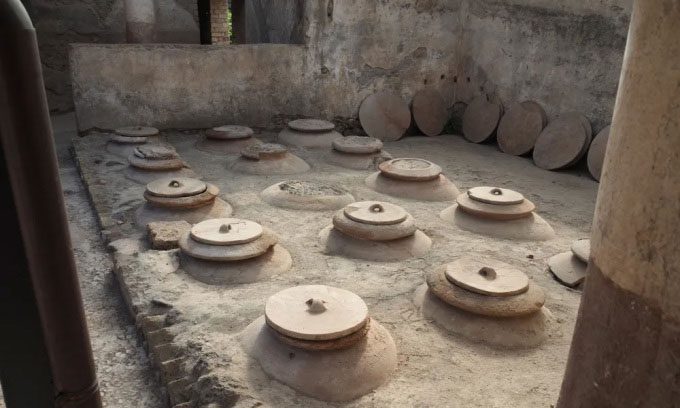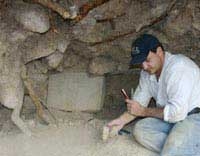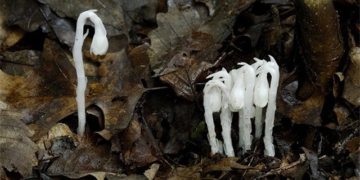A newly published study reveals that Roman wine, aged in clay amphorae buried underground, has a slightly spicy flavor and aromatic notes of toasted bread, apples, walnuts, and curry.
Ancient Romans (around the 8th century BC to the 5th century AD) consumed a significant amount of wine. Some historians estimate that they drank up to one liter of diluted wine daily, which exceeds the average consumption of many people in the 21st century. A recent study published in the journal Antiquity sheds light on the flavors, aromas, and textures of this wine, as reported by Smithsonian on March 4. The findings suggest that Roman wine has a slightly spicy flavor with aromas of toasted bread, apples, walnuts, and curry.

Amphorae buried in a wine cellar in Boscoreale, Italy. (Photo: E. Dodd/Ministry of Culture/Archaeological Park of Pompeii).
In this new study, the research team examined dolia, a type of clay amphora that the Romans used to store, ferment, and age wine. Historians have long known that dolia were widely used, but many questions remain regarding the details of the production process. The new study emphasizes that this type of vessel was essential in winemaking techniques. It is not an ordinary container; it is precisely designed with specific components, sizes, and shapes that contribute to successful fermentation.
Dolia were a key factor in ancient winemaking for hundreds of years, according to Dimitri Van Limbergen, the lead author of the study and an archaeologist at Ghent University. Unlike today, where many wines are produced in stainless steel barrels with added preservatives.
The Romans buried the dolia underground, up to the rim, and sealed them with lids to regulate temperature, humidity, and pH during fermentation, according to Van Limbergen and co-author Paulina Komar, an archaeologist at the University of Warsaw. The clay vessels have a porous structure and are lined with tar on the inside, which helps to tightly control the oxidation process.
Dolia have a narrow base, allowing solid materials from the grapes to sink to the bottom and separate from the wine, producing an orange hue. However, comparing this color to modern wines is challenging, as Roman wine was not categorized into red and white varieties. “Roman wine comes in various colors, from white, yellow to golden, amber, brown, red, and black, all depending on the type of grapes used for maceration”, Van Limbergen explained.
The conditions created by burying the amphora also influence the unique characteristics of the wine. Inside the vessel, yeast develops on the surface of the wine, producing chemical compounds such as sotolon. These compounds contribute to the wine’s distinct flavor and aroma.
“The ancient wine made from white grapes and utilizing these techniques would certainly have an oxidized taste, with complex aromas of toasted bread, dried fruits (such as apricots), roasted nuts (walnuts, almonds), green tea, and a dry, resinous feel (with many tannin compounds in the wine from the grape skins)”, Van Limbergen noted.





















































